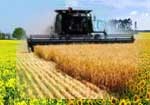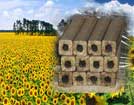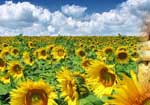






2. Pellets 8mm
3. 6-8 mm DIN+ Quality Pellets
4. We manufacture and sell fuel pellets from straw to European countries
5. Sell wood pellets
6. Wood pellet manufacturing
7. Sunflower Husk Pellets
8. Din Plus Wood Pellets
9. Export of sunflower husk pellets to the European market
10. Export of sunflower husk pellets to the European market
Cereal straw in Australia can be bioenergy feedstocks
Sat-18-2016
It’s no secret that bioenergy is the chronic underachiever in Australia’s renewables sector. Five years ago, CSIRO released a study into the potential for a dramatic scale-up of the sector, showing that bioenergy could deliver up to 20 per cent of Australia’s electricity by 2030 given the right economic and policy settings. Since then, bioenergy’s share of generation has barely shifted: it’s stuck at around 0.9 per cent, against an OECD average of 2.4 per cent.
As of 2016, uptake of bioenergy – in its many guises – remains slow nationwide, thanks in part to policy uncertainty and investor wariness. However, for the first time in a while there are some promising signs of movement. The South Australian government, in particular, is getting behind the industry, releasing a Bioenergy Roadmap in 2015 “as a first step towards creating a substantial and sustainable bio-energy industry” in the state (see more at www.renewablessa.sa.gov.au).
New straw-fuelled bioenergy plant
More tangibly, and also in South Australia, a company called Yorke Biomass Energy (YBE) is planning a new straw-fuelled bioenergy plant near Ardrossan on the Yorke Peninsula. Spearheaded by renewables veteran Terry Kallis, and initially announced last September, the Yorke Biomass Energy project is a $100 million, utility-scale biomass plant with a maximum capacity of 20 MW and a footprint of around 5 hectares.
This is exciting for a number of reasons. Not just because any new bioenergy capacity is good news for the industry, but because it would be an Australian first: there are currently no straw-fuelled bioenergy plants on our shores. In other countries, including Denmark, Spain and Romania, straw biomass already plays a significant role in electricity production, but in Australia, again, all is potential. A 2012 report published by Bioenergy Australia, Bioenergy in Australia: Status and Opportunities, said that “There are significant quantities of cereal straw in Australia that are potentially available to be harvested as bioenergy feedstocks,” estimating that in Western Australia alone there is “potential for production of 1.3 million tonnes of cereal straw that could be sustainably removed for use as bioenergy feedstock.”
A large and untapped resource, then – though to put this in perspective, the report adds that a single biomass processor might require a quarter of a million tonnes of straw biomass per year, which represents up to 50 per cent of the WA estimate in a low rainfall season.
Big challenges and great news for the bioenergy industry
This brings us to one of the biggest challenges for this type of facility, and another reason why the YBE project could be great news for the bioenergy industry: the supply model. Producing electricity from crop residues such as straw requires a huge amount of biomass, supplied reliably year-round, from what could be dozens or even hundreds of different suppliers. This adds a great deal of uncertainty to this sort of operation, relating to issues such as seasonal crop yields, price per tonne of feedstock, costs of storage, and costs of collecting, baling and transporting the biomass.
To remove some of this uncertainty, and ensure that the plant operators and the suppliers are working towards the same goals, YBE has developed an innovative co-op style business model for the local suppliers. Under this model, the biomass suppliers will own and operate a company called Yorke Biomass Supply (YBS) that will supply feedstock to the plant. YBS, and the individual farmers and straw aggregators who make up the company, will have an exclusive 20-year contract with YBE for the supply of biomass at a guaranteed base price of $85 per tonne, maintained in real terms.
Mr Kallis says this will be a win-win for the farmers and the operators. The farmers get the opportunity to diversify their income, with more than a hundred suppliers sharing in excess of $6 million per year, while the operators get reliable supply and a local community that is invested in the project’s success.
With community support for the project more or less assured, and some of the biggest obstacles to this type of project seemingly overcome, the YBE project seems to be making all the right moves. If all continues to go to plan, construction will commence in the last quarter of 2016, with full operation by the end of 2017.
We caught up with Terry Kallis to get more information on this ground-breaking project.
The project was born out of the CERES wind farm project – also being developed on the Yorke Peninsula – where we sought to find a way to spread the benefits of renewable energy beyond the wind farm hosts. We saw the biomass project as strong solution for potentially some 100-plus local farmers.
The project is at the stage of securing supply agreements, which we hope to have finalised by March. Progress so far has been excellent.
The YBE project will be located on land covering some 7.3 hectares on the north-western corner of Silo Road and the Yorke Highway, approximately 2 km south of Ardrossan centre.
The location was selected because Ardrossan is a hub for transport, has a nearby major substation, it is close to the coast for potential sea water cooling and it has an adjacent industrial precinct. And, of course, because the Yorke Peninsula has the potential to supply a large biomass resource.
The funding model for pre-commercial close has been venture capital, which is fine for the foreseeable future. Beyond that we will be looking at the potential for an ARENA grant and to access the CEFC’s new $200 million equity fund for biomass projects.
You have worked across many different areas in renewable energy over the years. What drew you to straw-fuelled generation?
Over the past eight years I have had a lot to do with the Spanish renewables industry, which is a leader in the renewables space. It was through those connections that I became aware of biomass developments and Acciona’s experience.
At this stage it is a standalone project, but it could be replicated in several places, both elsewhere in SA and interstate.
We’ve had great support from all relevant government and industry bodies, in particular from the South Australian government through our Department of State Development (Renewables SA) sponsorship of a Crown (section 49) development approval process via the Development Assessment Commission.
In my view the fundamental business model, with a sharing of benefits, has been missing. YBE has addressed this problem with an innovative approach, where we’ve set up a cooperative-style business model with the local suppliers.
The model came out of the an idea we had about what would make the local farmers/suppliers comfortable, and the open book and profit-sharing part of the model came from knowing the problems experienced by others in the biomass space.
Because this project has no precedent in Australia, YBE had to look overseas for inspiration and expertise, and found it in the far north of Spain. Acciona, a global infrastructure company, has designed, constructed, and owns four large biomass plants in Spain that have been operating successfully for over a decade, and YBE has penned an exclusive deal with the company to engineer, procure and construct the Yorke Peninsula plant. The YBE plant is being modelled on Acciona’s 25 MW Sangüesa plant near Pamplona (pictured).
Following the design of the Sangüesa plant, the YBE facility will have straw biomass transported to the plant in bales, which are then loaded onto a conveyor belt and carried to a central boiler. As the biomass reaches the boiler it is shredded into small pieces, before being burned at a high temperature. The combustion heats water circulating in the walls of the boiler and turns it to steam, which passes through a super-heater before driving a turbine.
The water vapour that has passed through the turbine, now at lower pressure and temperature, is then taken to a condenser that is cooled by sea water from a channel that runs through the plant area. The cooled steam turns back into water, which is sent in a closed circuit to the walls of the boiler, starting the whole process over again.
To complete the cycle, the waste material that settles at the bottom of the boiler can also be used as agricultural fertiliser, recycling some of the nutrients back into the ground.
Source: http://ukrfuel.com/news-house-of-straw-bioenergy-on-the-yorke-p-131.html
Any copying and distributing withoutactive hyperlink is strictly prohibited!
Views: 3114
 Stobart biomass division is to make a deal
Stobart biomass division is to make a deal
Biomass Related News
- 150-Year-Old Galapagos tortoise Dies at San Diego Zoo
- Uses of wood charcoal
- Current biomass energy sources in Slovenia
- Renewable energy sources as an investment trend
- In 2012 the number of straw pellet sellers in Ukraine increased by 45%
- Drax begins new health promotion sessions
- The effect of regime parameters on pressing efficiency and quality of wood pellets
- Great changes in viability and profitability of solar power
- Saving Energy for generic electricity consumers
- Wood Innovation Grants for Haines and Hydaburg
|
© Ukrainian Biofuel Suppliers 2008-2024 |
